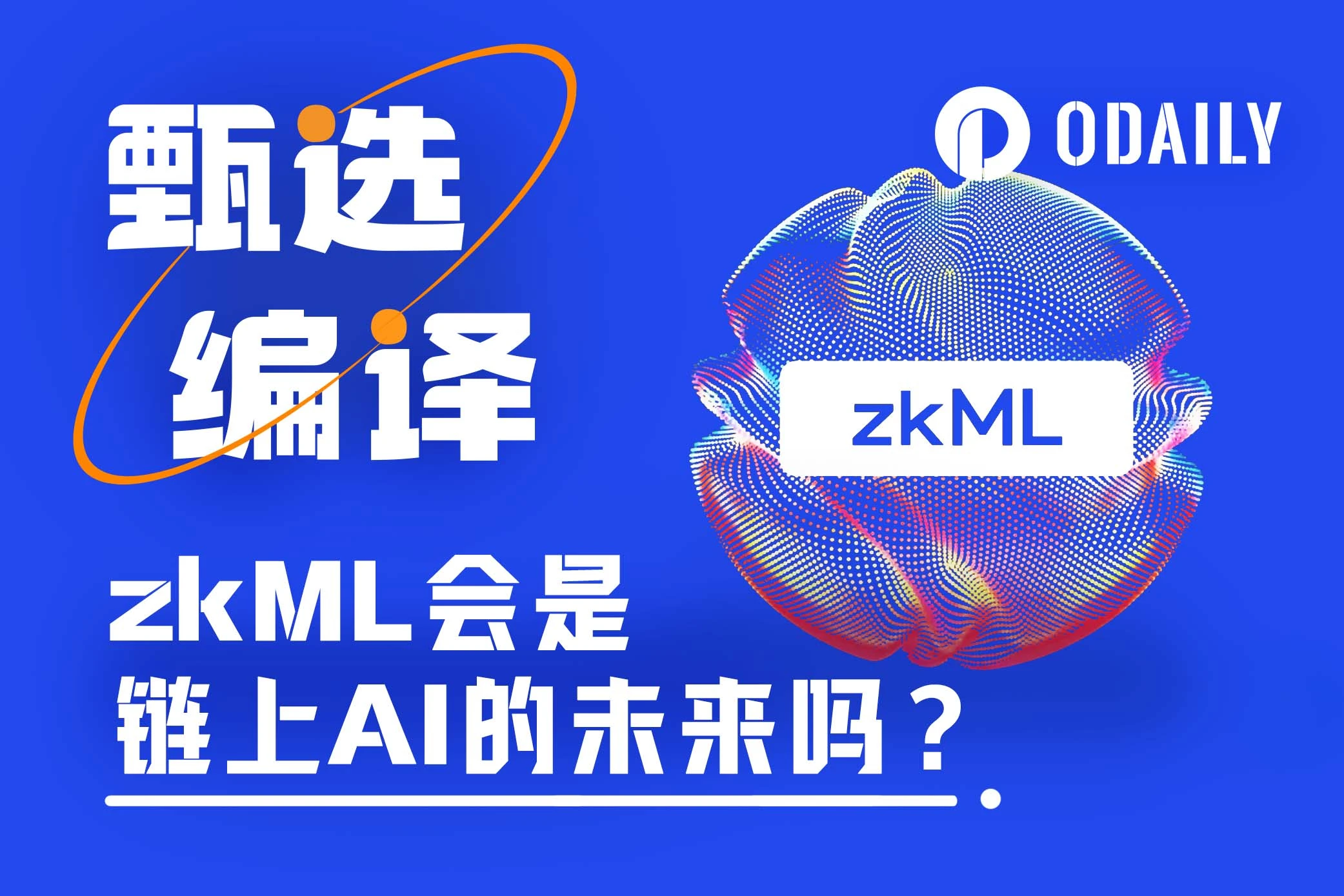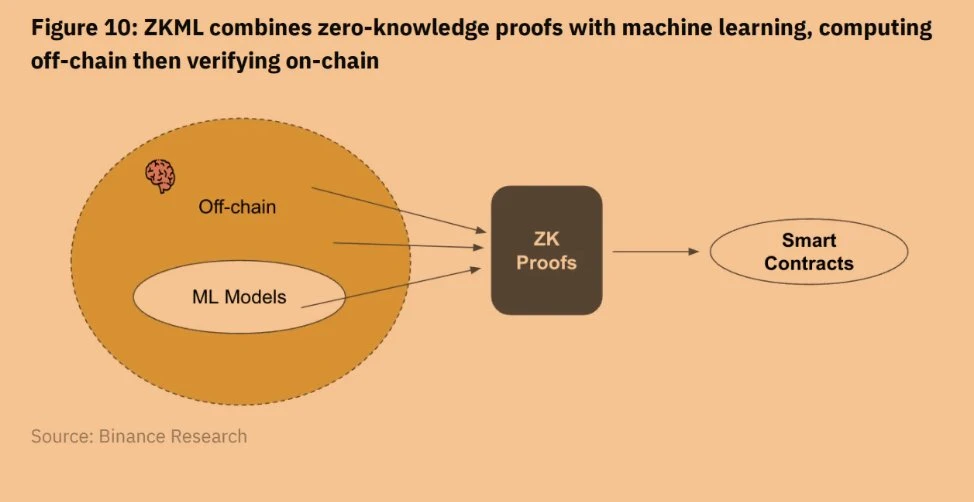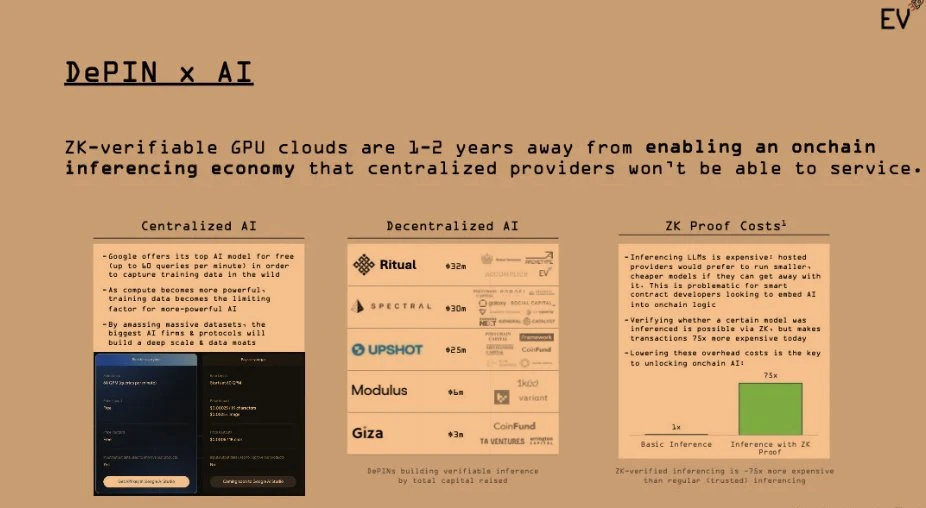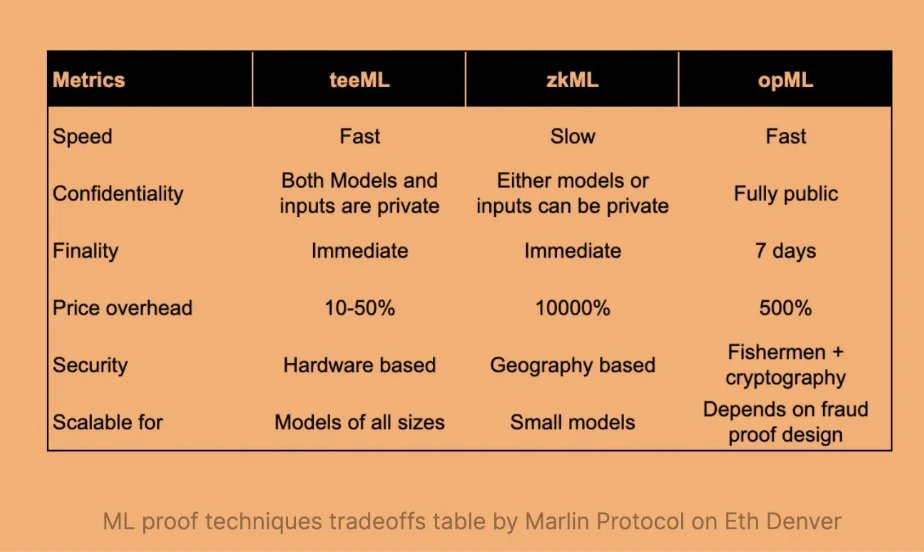Original Author |@DistilledCrypto
Compiled by | Golem

Since the popularity of large language models like ChatGPT, running similar machine learning models on decentralized networks has become one of the main narratives of blockchain + AI. However, unlike trusting reputable companies like OpenAI, we cannot trust decentralized networks to use specific ML models for inference, so verification is necessary. Considering the privacy of data, zero-knowledge machine learning (zkML) is widely regarded, but will it be the future of on-chain AI?
Odaily Star Daily will briefly introduce the basic knowledge of zkML, noteworthy zkML projects, and finally briefly explain the limitations and alternatives of zkML in this article.
Basic Knowledge of zkML
Zero-Knowledge Machine Learning (zkML) is similar to a confidentiality method in computation. It mainly involves two parts:
Performing tasks using machine learning (ML);
Proving that the task is completed correctly without revealing all the details.
In simple terms, its operation is as follows:
a. Running tasks
Someone uses an ML model to process some data and obtain results, similar to a chef baking a cake according to a recipe but not telling anyone the ingredients.
b. Proving tasks
After the task is completed, they can present a proof. For example, "I used a specific input in this specific model and obtained this result." They are actually proving that they correctly followed the steps in the recipe.
c. Keeping secrets
The beauty of zkML is that when they prove the task is completed correctly, they can keep some details confidential, such as the input data, the operation of the model, or the results. In short, zkML allows the prover to say "trust me, I did it right" while still maintaining the privacy of their methods and data.

Introduction to Noteworthy zkML Projects
Since the concept of zkML was proposed, there have been many related projects under development for nearly a year, and a few of them have issued tokens in the market. Messari has listed some well-known VC-invested zkML projects, and they will be introduced below.

Source: Messari
Spectral
Spectral is building on-chain agent economies for Web3. Their flagship product, SYNTAX, is a proprietary Large Language Model (LLM) capable of generating Solidity code. Spectral enables users to create on-chain autonomous agents while leveraging decentralized ML inference to enhance smart contracts. Additionally, using zkML, Spectral can provide evidence that specific predictions are generated by specific ML models, ensuring trust and authenticity in the process.
Spectral has issued tokens, with a market value of 1.19 billion USD under the symbol SPEC.
Worldcoin
Worldcoin is developing an open-source system aimed at enabling everyone to participate in the global economy. In Worldcoin, a potential use case of zkML is to enhance the security and privacy of iris recognition technology. The token WLD currently has a market value of 10.7 billion USD.
Its operation is as follows:
a. Self-hosted biometric recognition
Users of World ID can securely encrypt their biometric data (such as iris scans) on their mobile devices.
b. Local processing
Then, users can download an ML model to their devices to generate a unique code from the iris scan.
c. Privacy-protected proof
Using zkML, they can directly create proof on their own devices. This proof confirms that their iris code was accurately generated using the correct model without exposing the user's actual data.
Risc Zero
RISC Zero aims to enhance trust and efficiency on the internet by providing computing services without the need for mutual trust among parties.
The key focuses of RISC Zero are as follows:
a. Extending blockchain
It uses Bonsai proof services to execute complex operations, enhancing the security of the blockchain. Bonsai manages complex computations and private data off-chain to improve efficiency.
b. Collaboration with Spice AI
Spice AI provides composable, ready-to-use data and AI infrastructure, including hosted cloud-level Spice.ai OSS. This collaboration aims to provide developers with a comprehensive zkML toolkit.
c. Machine learning services
Developers can use RISC Zero to securely access and query data, privately train ML models, and provide proof that the data has been processed correctly.
Essentially, RISC Zero provides MLaaS (ML as a service) to developers while ensuring the privacy and security of data and processes.
Giza
Giza is a machine learning platform running on the Starknet network.
a. Main objective
Giza aims to directly expand ML operations on the blockchain.
b. Technical foundation
It uses Starknet, which supports zero-knowledge (ZK) proofs, to verify ML operations, ensuring accuracy and security of computations without revealing underlying data.
c. Applications
On Starknet, Giza enables "Giza Agents" to automatically execute various financial strategies, including cross-protocol yield aggregation, asset allocation, and risk-free market making. Essentially, leveraging the advantages of zkML, Giza allows for secure, automated execution of financial strategies on the blockchain.
Vanna
Vanna is a modular AI inference network that is not only compatible with EVM chains but also provides flexible security, allowing users to choose from various verification methods such as zkML, optimistic ZK, opML, teeML, etc. The future use cases of Vanna include using LLM to generate on-chain GameFi game dialogues; detecting vulnerabilities in on-chain smart contracts; risk alert engines for DeFi protocols; and a reputation system for identifying witch accounts in airdrops.
In addition to the above-mentioned projects, there are other projects in the zkML ecosystem as shown in the figure below, which will not be further introduced due to space constraints, and readers are encouraged to refer to them on their own.

Source: SevenX Ventures
Limitations and Alternatives of zkML
Although theoretically appealing, zkML is currently not very practical. AI computations themselves are resource-intensive, and adding encryption methods similar to those used in zkML would make them even slower. Modulus Labs reports that zkML may be 1000 times slower than conventional computations. In reality, waiting a few extra minutes is unacceptable for most users in their daily experiences.
Therefore, due to these limitations, zkML may currently only be suitable for very small ML models. In this case, many AI projects have to consider other verification methods. Currently, there are mainly two alternative solutions:
opML (Optimistic ML)
teeML (Trusted Execution Environment ML)
The following figure briefly illustrates the differences between the three:

Source: Marlin Protocol
免责声明:本文章仅代表作者个人观点,不代表本平台的立场和观点。本文章仅供信息分享,不构成对任何人的任何投资建议。用户与作者之间的任何争议,与本平台无关。如网页中刊载的文章或图片涉及侵权,请提供相关的权利证明和身份证明发送邮件到support@aicoin.com,本平台相关工作人员将会进行核查。




